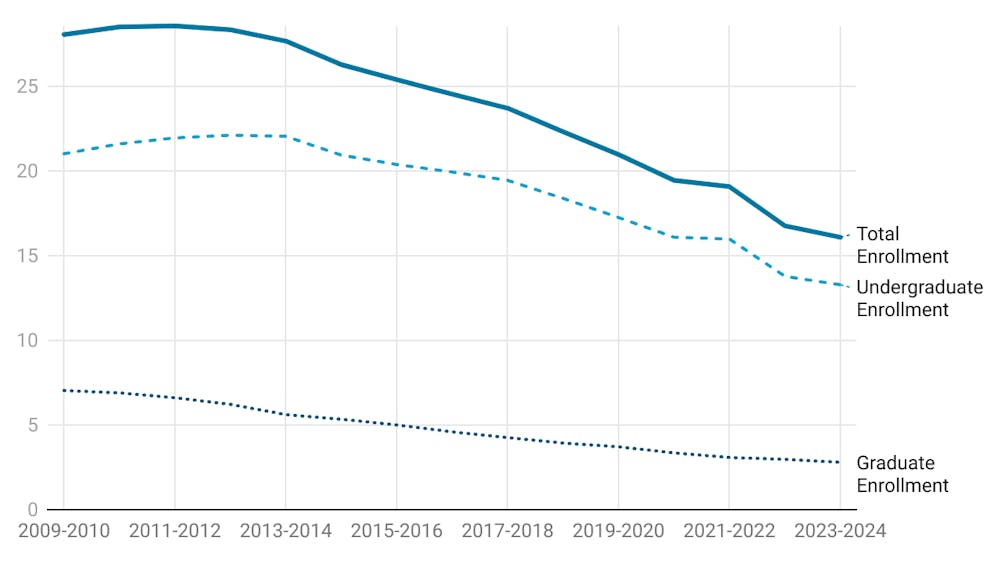Overall budget challenges were said to be in the millions “but manageable,” Chief Financial Officer John Lumm said at Eastern Michigan’s Board of Regents’ Finance, Audit and Investment Committee, “and will not require draconian cuts.”
According to Lumm, student credit hour growth exceeded expectations, growing by 4.3 percent, the first time in six years.
The committee met Tuesday to discuss revenue and the budget.
President Susan Martin was not present at the meeting.
Regent members met shortly to go over the university’s budgetary outlook and overall financial health.
Speaking little, the regents gave the floor to auditors from the business and auditing company, Plante Moran, which reviewed the school’s finances.
The regents also discussed the issue of Eastern competing with community colleges over enrollment.
The university’s total operating budget for the year of 2010 is $351.2 million.
A breakdown of that number was included in a pie graph cut into four pieces—the general fund, designated fund, an auxiliary fund and an expandable restricted fund.
The general fund, which is the largest portion of the budget with $267.7 million or 76 percent, is made up of revenue from tuition, state support and other miscellaneous sources.
Second is the auxiliary fund, maintaining $38.5 million or 11 percent of the budget – money made from self-supporting businesses such as student housing and student dining.
Matching the auxiliary fund at 11 percent is the expendable restricted funds which $40.0 million in revenue coming from grants and donations.
Such growth has boosted school revenues, while federal and state appropriations to Eastern have fallen. Though enrollment increased, operating cost stayed the same; a commendable achievement commented Moran’s auditors.
Earlier in the committee meeting Lumm commented on how the school has been borrowing money through the use of derivatives.
However, he assured audience members the school was not dabbling in the complex and exotic financial instruments infamously connected to the financial crisis where Wall Street needed to be bailed out.
Still, the auditing showed a market loss for the school, but those obligations are long term and the school is not forced to pay now and may even see a return on investment.
Regent member Phillip Incarnati raised the concern that according to the report Eastern seemed, “far less liquid” than it’s contemporaries, yet was “leveraged at the same rate.”
In the presentation, the school’s finances and rates of expenditures were matched up against other colleges in Michigan and fared well in terms of keeping costs down and other measures.
One of the most notable expenditures is the construction on the Pray-Harold building, which has an estimated cost of $57 million.
It was reported Eastern gives 8 percent over the average of Michigan schools back to its students. Students have also had more access to Pell grants in light of action taken by Congress to appropriating more funds to that cause.







